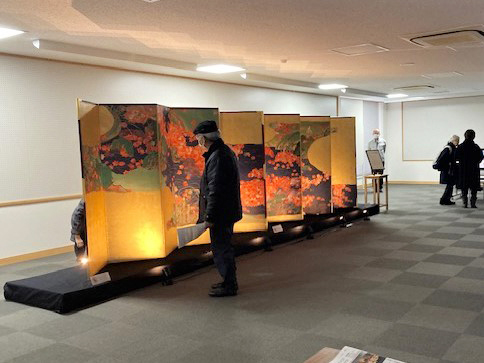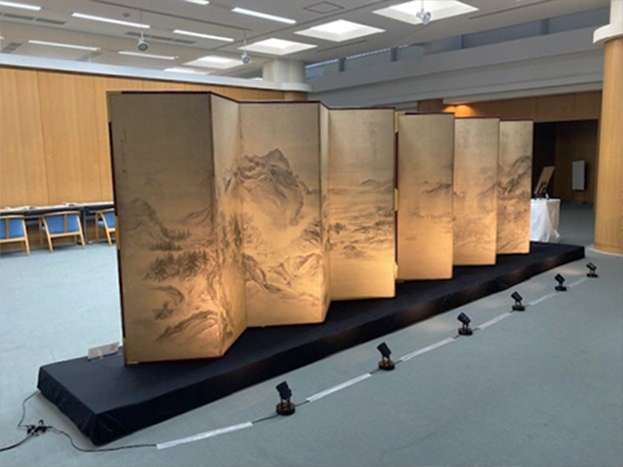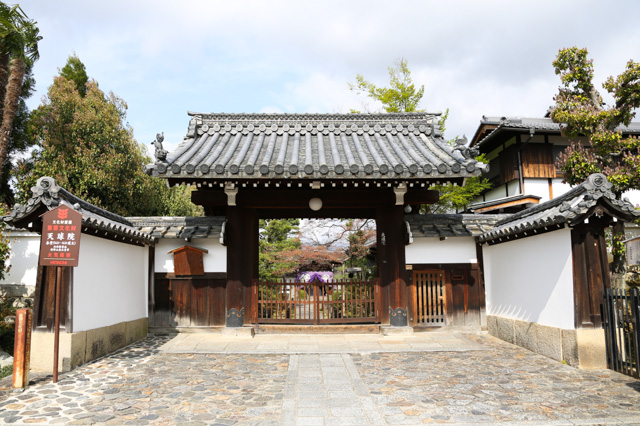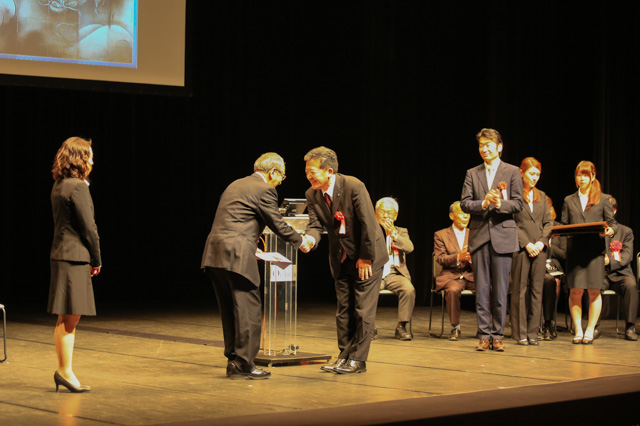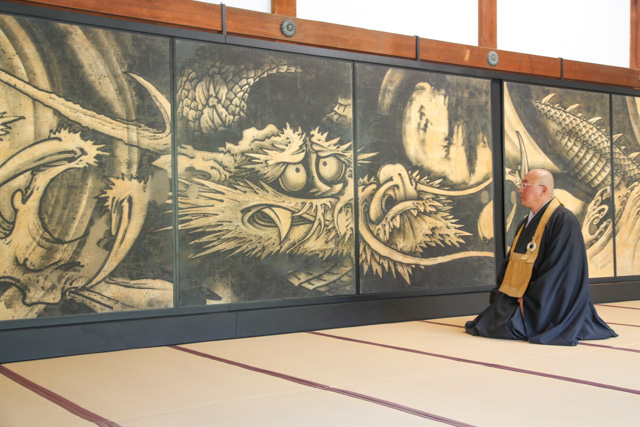June 4, 2024
Donation of High-Resolution Facsimile of Ikeda Koson's “Maple leaves on a stream (front); mountain views (reverse) ”to City of Agano
On January 24, 2024, a high-resolution facsimile of the “Maple leaves on a stream (front); mountain views (reverse) ” by Ikeda Koson (original owned by the Smithsonian Institution National Museum of Asian Art), produced as the 16th entry in the Tsuzuri Project, was donated to the city of Agano in Niigata Prefecture.
“Maple leaves on a stream (front); mountain views (reverse) ” is a representative work of Ikeda Koson, who was active as an Edo Rinpa artist toward the end of the Edo period. On the front are golden clouds and vibrant autumn leaves reflected on a stream, and on the back is a vast mountain and water landscape in ink wash. This is considered to be Koson's masterpiece, showing the brilliance of his technique in superbly differentiating between entirely different styles.
The original cultural property cannot be taken outside the Smithsonian Institution National Museum of Asian Art, where it is held, in accordance with the will of the founder. Thus, this work cannot be viewed without visiting the museum itself. Ikeda Koson's hometown is believed to be near Suibara in Echigo Province (currently Agano in Niigata Prefecture), and by donating a high-resolution facsimile through the Tsuzuri Project, we have realized a return of this work to the land connected to Ikeda Koson.
Moving forward, with the cooperation of the city of Niigata, which is adjacent to Agano, there are plans to display this donated work for general viewing within the cities of Agano and Niigata, as well as to use it at sites of school learning and the like.
Further, to commemorate this donation, from January 25 (Thursday) to March 1 (Friday) of 2024, the donated work was displayed at four facilities within Agano, where residents enjoyed it being exhibited without a glass case. Those who visited offered highly favorable comments such as: “I am so glad I was able to see this wonderful work locally” and “This allowed me to see the work close-up.”


